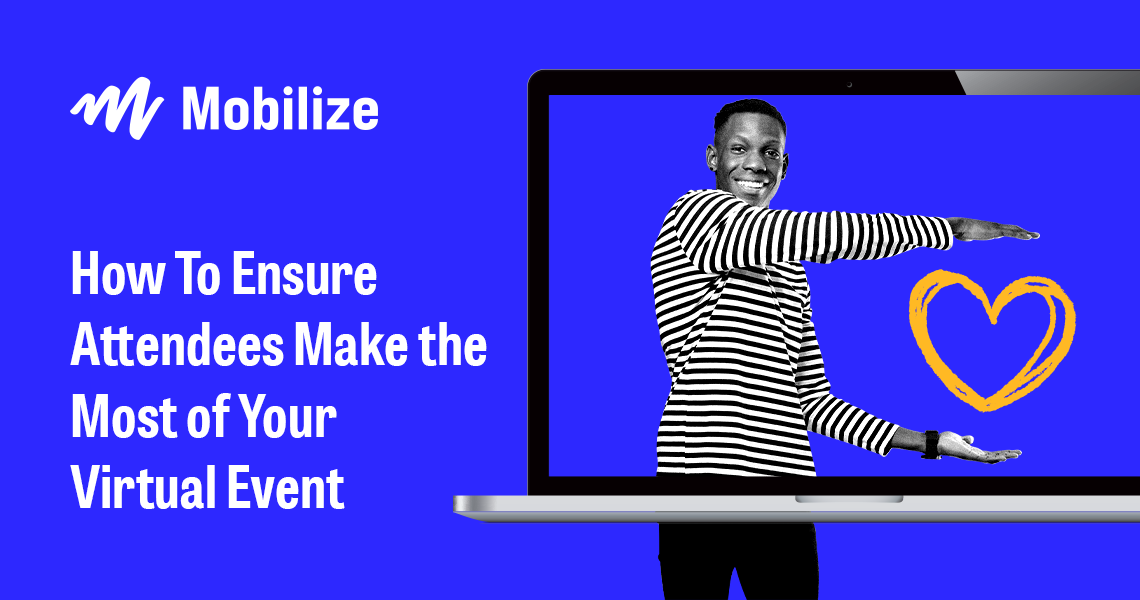

Best Practices
Best Practices
Planning a virtual event for volunteers? Use these tips to make sure attendees are engaged and interested from start to finish.

This guest post was written by the virtual event and eLearning experts at Web Courseworks.
COVID-19 brought many experiences to a halt in 2020, including large in-person gatherings, holiday travel, and even trips to the movie theater. However, the pandemic hasn’t halted the motivation of engaged volunteers— in fact, statistics show that the weekly shift volume of volunteers during the pandemic has been higher than any week in 2019!
Unfortunately, the eagerness of your volunteers doesn’t change the fact that you can’t engage with those volunteers in person, as you may have in the past. This is where virtual events come into play. At Web Courseworks, we specialize in learning technology for non-employees, such as association members. During COVID-19, this has meant working with organizations as they pivoted events to the virtual sphere.
While bringing virtual events for associations to life, we’ve found that the key tenets for success can translate to other sectors— such as volunteer engagement with nonprofit virtual events. In this guide, we’re going to cover strategies you can use to ensure your volunteers and supporters make the most of your next virtual event:
Whether you’re hosting a new volunteer training event, an educational session about the latest advancements toward your mission, or even a gratitude event, the virtual experience needs to be just as accessible and engaging as an in-person iteration. Here are a few tips to help you accomplish that.
At this point, your supporters aren’t exactly new to the idea of virtual engagement— they’ve likely been connecting with friends, family members, and even their workplace using technology since the pandemic emerged. However, if you’re hosting a comprehensive virtual event equipped with live streaming, downloadable resources, knowledge checks, multiple learning tracks, and more, that may be outside of their current experience.
Take a proactive approach to educate your staff and volunteers about navigating your virtual event. Here are a few tips to do so
These tips are especially important in the instance of new volunteer onboarding and training. Recruiting new supporters is step one, and maintaining a positive relationship after that first connection is what retains volunteers in the long run. Ensuring they have a successful, headache-free training experience will set volunteers up for success over time.
When your team conducts volunteer training in-person, you may include any combination of educational sessions, breakout sessions, icebreaker activities, and more. Including a variety of experiences ensures that your volunteers are well-trained through the event and feel included in your organization as a whole. This capitalizes on the idea that effective training is one of the best ways to set your relationship with a new volunteer up for success.
When executed unsuccessfully, virtual events can be one-dimensional experiences— just a volunteer alone in their home, facing a computer with a droning webinar. We recommend working with a virtual event platform that can facilitate a wide range of engagement opportunities, such as:
With live streaming for nonprofits, live chat, and personalized tracks, you’re not speaking at volunteers with your virtual event. Instead, you’re engaging them in a two-way conversation that shows volunteers that they are valued for their contributions to the whole. And, you may even discover common questions and comments that can help you improve your training going forward!
Just because your volunteers may be home more than ever, that doesn’t mean they have more time. Juggling increased work hours, at-home education, and Zoom-filled social lives has made many people busier than ever. So, it’s up to you to schedule your virtual event in a way that’s accessible for busy volunteers.
The guidance around virtual event scheduling differs depending on the type of event you’re hosting. Generally, we’d recommend:
In this Web Courseworks guide to virtual conferences, we also recommend having a team on-hand to respond to any technical difficulties during the event itself. This is crucial to prevent the cancellation or delay of your event, which can present major challenges for event attendees with busy schedules.
To wrap up, most of your supporters have probably encountered basic video conferencing software. However, navigating a comprehensive virtual event platform is an entirely different experience. With these tips, you’ll create a virtual event experience that’s easy to access and engaging for your attendees. Good luck!

Best Practices

Best Practices

Best Practices